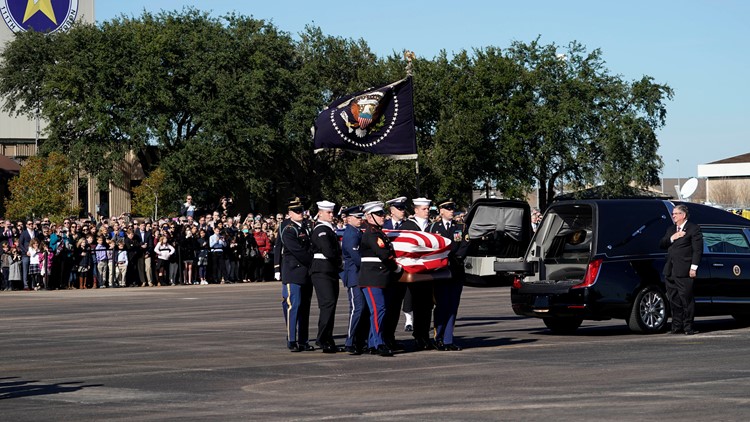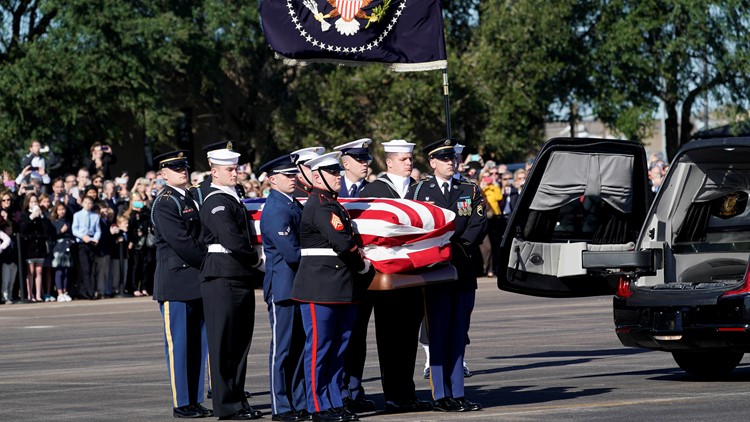A brief departure ceremony for the remains of former President George H.W. Bush drew family members to Ellington Field Monday morning.
Another ceremony marks the body's arrival at the Capitol in Washington D.C. before the public can begin to pay respects starting at 6:30 p.m.
Bush will lie in state until Wednesday. Then he will lie in repose at St. Martin’s Episcopal Church in Houston after being brought back to Houston.
Many of those watching the Bush 41 coverage online are wondering what's the difference among "lying in state," "lying in repose" and "lying in honor."
According to the Military District of Washington's website, the difference is based on whatever building the remains are kept in for the public to pay their respects.
When a body is lying in state, a member of the government (or former member) is placed on view in a principal government building.
When a body is lying in repose, the member, or former member of government, is placed on view in any other building.
Examples of someone lying in state would include President Gerald Ford or Senator Daniel Inouye lying in state in the U.S. Capitol Rotunda, or Congressman Paul Gillmor lying in state in the Ohio State Capitol.
Examples of someone lying in repose would include President Reagan at the Ronald Reagan Presidential Library, Simi Valley, CA in 2004, and President Ford at St. Margaret's Episcopal Church, Palm Desert, CA, in 2006.
Lying in state in the Rotunda of the U.S. Capitol is authorized by Joint Resolution of Congress.
A guard of honor maintains a vigil over the remains throughout the period of time the remains lie in state. Public viewing is generally allowed during the lying in state.
Lying in Honor
The term "lying in honor" encompasses two different scenarios:
1. When the casket of an individual who is not a member of government is placed on view in the principal government building of a country or state to allow the public to pay their respects. An example would be Rosa Parks in the U.S. Capitol Rotunda.
2. When the casket of a member of government, or former member of government, is placed on view in the U.S. Capitol, but not in the Capitol Rotunda, to allow the public to pay their respects.
Examples include Senator Robert Byrd and Senator Frank Lautenberg lying in honor in the Senate Chamber.













































